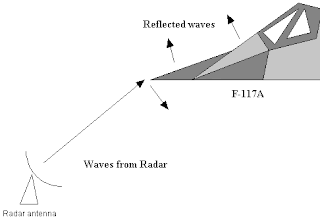Stealth Technology Is The Next Big Thing
Stealth technology is the most revolutionized discovery made by the armies. A technology which can camouflage you from your enemies. It is as a fifth generation technology. Stealth mode helps in reducing the detectability of any weapon. So one can attack even without letting the enemy know thereby creating a huge damage.
 |
| Different Stealth Technology Aircrafts |
Stealth Technology Definition:
Stealth Technolgy is a military tactic which makes stealth warships undetectable. Neither radars, SONAR, or infrared can detect the weapons. Stealth technology aircraft, ship, satellite, submarines, missiles are some devices where this is used. The undetectability under the electromagnetic medium names it as stealth camouflage technology.
Stealth Technology History:
The answer to the question of who invented stealth technology lies in this section. The history of stealth technology began during the first world war.
The Germans during World War I used a transparent covering material called Cellon. The attempt was to reduce the visibility of military aircraft. In fact, the reflection of sunlight made the transparent material more visible.
The British during 1916 modified an SS class airship. The purpose was to make it invisible during night time. The airship had a silenced cylinder and a black gas bag. These two made the airship inaudible and invisible when it crossed the German Lines. The idea was dropped as the Germans came to know about the plan.
Development of the latest stealth technology began in 1958 in the USA. The motive was to prevent the tracking of their U-2 spy from the Soviet Union. They used radar absorbing materials. The planes were shaped in such a way that it reduced radar detectability. The blackbird series was used for this experiment. But, the attempts during the cold war remained unsuccessful.
In 1964, the Lockheed Martin's SR-71 was developed. This plane had a speed of Mach 3.3 and was functional at 90, 000 ft altitude. It surpassed its prior models in many ways. The plane had many notable features. Canted vertical stabilizer, use of composite materials in key locations. The plane was coated with radar absorbing paint.
The US Department of Defense launched the project named Lockheed Have Blue, in the 1970s. The aim was to develop a stealth fighter. There was a fierce bidding between Lockheed and Northrop for the contract. The Have Blue program was a stealth technology demonstrator from 1976 to 1979. In 1977 Lockheed gave two models under the project. The models were only 60% scaled back then. The success of this project enforced the military to lead further development. This was the reason which led to the development of F-117.
Working Principle of Stealth Technology:
How does stealth technology works? It's the most often question which rises in people's mind. The answer to this question lies in this section.
Stealth technology is not a single technology. It is a combination of technologies. The aim is to greatly reduce the distances at which a device is getting detected. The technology aims in radar cross section reduction in particular.
 |
| Stealth Technology Working Principle |
Radar Cross-Section Reduction:
Since the invention of radar, many ways were tried to reduce the radar detectability. The prevention in detection can be done in many ways:
- Vehicle Shape: The detection of vehicles under the radar can be reduced by giving the vehicle a particular shape. This was recognized in the late 1930s after radars came into existence. The shape of the vehicle can make a significant difference in detectability. Orthogonal metal plates are the most efficient way to reflect radar waves. The shape of the nose of the plane or tail should be pointed. The spherical shape gives a larger area for the radars to easily detect the jet. The pointed nose or corners provides less area, making it more undetectable. Moreover, the reflection from a straight wing is different from that of the incident wing.

- Vehicle Manufacturing Material: Non-metallic airframes are used. Dielectric composites are more transparent to radar. Composites often contain ferrites which optimizes the magnetic property of a material. Radar absorbing material is also used to reduce detection. The thickness and material of the coating can vary but the function remains the same. Present radar absorbing material contains dielectric composites and metal fibers containing ferrites isotopes. These isotopes help in deflecting or absorbing the radar waves targeting the surface.

Working Of Radar Absorbing Paints
Stealth Technology Application:
The applications of stealth technology are as follows:
- Stealth Technology Aircrafts: Jets like F-117 Nighthawk, B-2 Spirit, F-22 Raptor, F-35 Lightning, J-20, Su-57 are some examples. These jets use stealth technology. In fact, F 22 stealth technology is the only fifth-generation aircraft having the new stealth technology.

Lockheed Martin F 117 Stealth Technology Aircraft - Stealth Technology Ships: The ships having stealth technology are made in a particular shape and also coated with radar absorbent material. Some example of such ships is Type 055 destroyer, Formidable class brigade, Add - class corvette, US nave Sea Shadow.

US Navy Stealth Technology Ship: Sea Shadow
Stealth Technology In India:
Stealth technology in India is underway. The DRDO chief in an interview said that India is developing a fifth-generation aircraft. India is building a one on one prototype which will be available in a years time. The Defence Research Development Organization DRDO is working on a prototype. The prototype is being considered by two aspects. One is the shape of the aircraft and the second is the material coating. The airplane is made to build in such a way that is reduced radar detectability by up to 70%. Moreover, radar absorbing paints are used to further the detectability of the aircraft. India is not far behind. Soon it will also have its own stealth aircraft.
Hence, stealth technology is the next big thing in the world of the aircraft industry.

Comments
Post a Comment